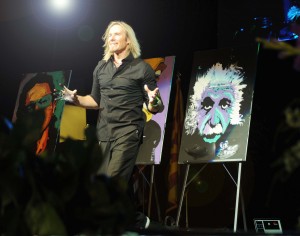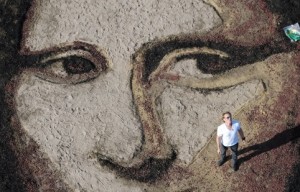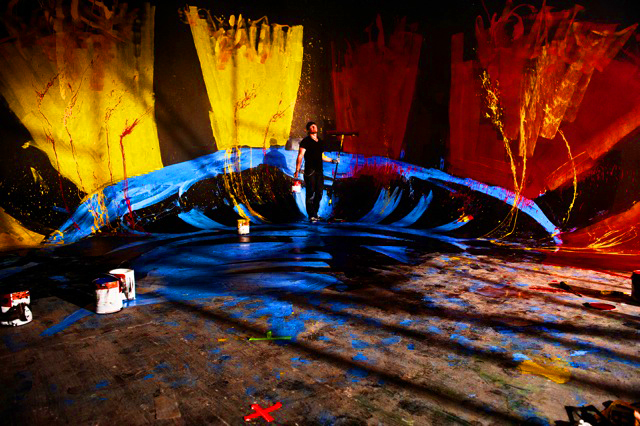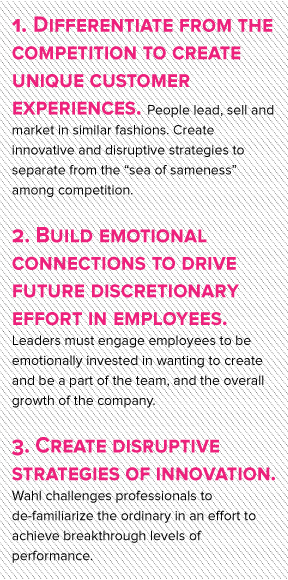How strategic thinking with the mind of an artist can get you far in business
By Jaclyn Crawford
Graffiti and business are two things that usually do not intersect, but in a twist of fate for Erik Wahl, author of “Unthink” and keynote speaker, he has been able to successfully intertwine the two, answering the long-standing question: How do we create a culture of creativity in the workplace?
 Wahl started his career in a traditional manner, attending business school and continuing on to a job that he said was fulfilling for him in his chosen field. At the time of the recession, the idea of being a “traditional businessman” was taken away from him, and he turned toward art. Wahl’s network became a community of artists who had vision but did not know how to express it to the public.
Wahl started his career in a traditional manner, attending business school and continuing on to a job that he said was fulfilling for him in his chosen field. At the time of the recession, the idea of being a “traditional businessman” was taken away from him, and he turned toward art. Wahl’s network became a community of artists who had vision but did not know how to express it to the public.
“And that is where I had this epiphany, that it is not either businessman or artist,” Wahl said. “But rather, it is a mashing of the two together—to take this art that has now become such a part of my identity, and translate it back to the business community so they can create a vision to create disruptive strategies.”
A Personal, Disruptive Strategy
Though Wahl is known for his presentations on graffiti art, he also works in other forms, including sculpting, photography, song and landscape art. Highlights range from a landscape design of a 10,000-foot Mona Lisa near Los Angeles to graffiti art paintings he presents at keynote speeches.
“I am challenging the status quo,” Wahl said. “So we have taken this identity as graffiti artists because I want to stop C-Suite executives in their tracks and think, “What, we just had a graffiti artist open our national sales meeting?’ That is one of those a-ha moments when people want to know more.”
On top of these unique works, Wahl does not sell any of his paintings to the general public. “As a business mind, they would say I would make so much more money if I sold my artwork, but you cannot put a price on cool,” Wahl said. “I don’t make supply available to the market anywhere. It jacked up the demand, and that is where I have created the new normal, and that is a disruptive business strategy.”
 Creativity in the Workplace
Creativity in the Workplace
One of the hot topics talked about at business conversations today is creativity in the workplace. According to Wahl, most of the time, talking is all that happens in the workplace when it comes to encouraging new thinking.
“There is such a strong resistance to creativity outside of just talking about it,” Wahl said. “And that is why there is so much opportunity for organizations to actually embrace it, and to actually create an environment where it is okay to take a risk and for employees to be creative.”
To combat this, Wahl offers three tips: differentiate from the competition to create unique customer experiences, build emotional connections to drive future discretionary effort in employees, and then create disruptive strategies of innovation (see sidebar).
“What I am teaching [executives] is how to utilize the unused portion of their mind,” Wahl said. “Enable and allow employees to become emotionally invested—it’s not just some paycheck, but they are a part of something bigger”
Time to ‘UnThink’
Wahl saw the trends in executives wanting to begin this process of embracing creativity, but recognized it was lost when they didn’t know where to go next. That is when he came up with a word, and a book, to help guide the way: “UnThink.”
“We can’t just keep doing the same pattern of success,” Wahl said. “The things that were successful next year, won’t be the next. Our consumer is changing, the economy is changing, but [business] is not.”
He describes the idea of unthinking similar to the way we leash dogs or lock bikes—to control them. To unthink, Wahl said, is to unleash and unlock the mind to come up with boundless, innovative solutions and to get out of the patterns in which one is likely to think.
“If you look at the breakthrough and game-changing ideas in business,” Wahl said, “it is those people who are willing to take risks, step outside their comfort zone, and step outside of what they have done in the past. In a sense, they have the vision and creativity of an artist, but implemented in a business strategy.”
 Jaclyn Crawford is the Assignment Editor at Forefront Magazine
Jaclyn Crawford is the Assignment Editor at Forefront Magazine


